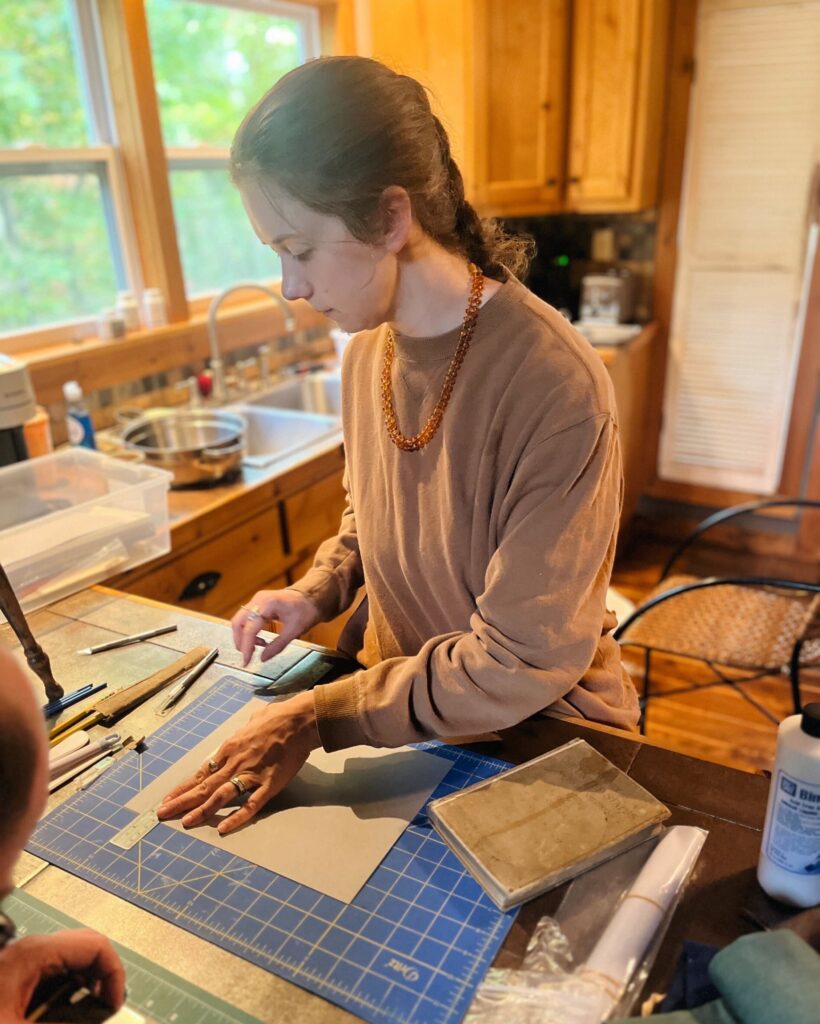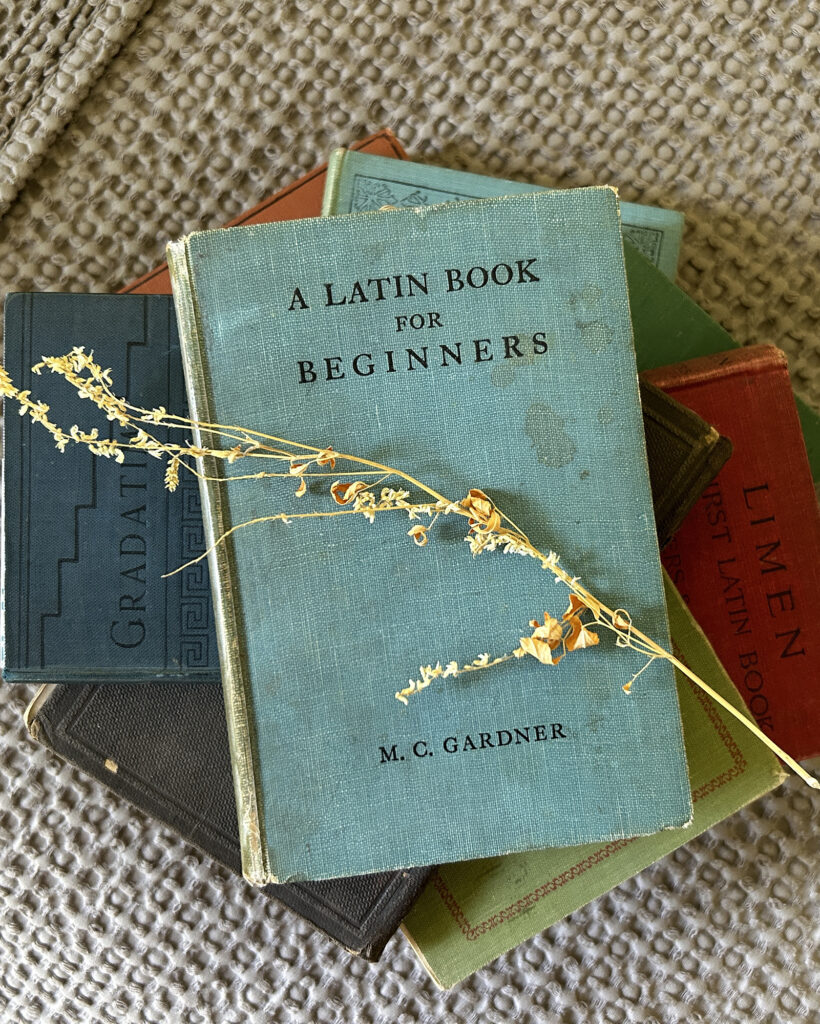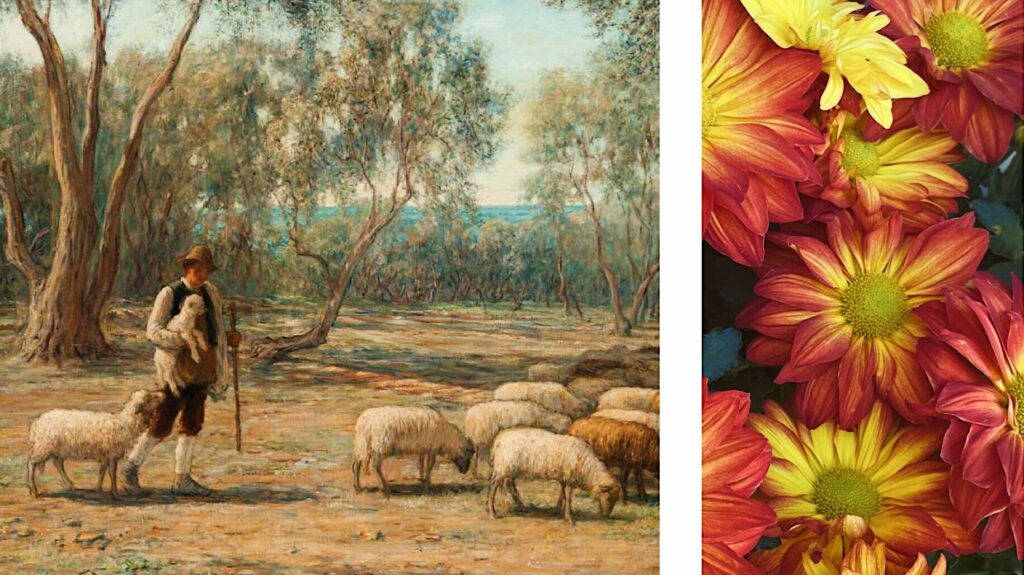The CMP Review — Week of October 16
October 16, 2023

“Once a year it is a good plan … to go through the list … —overlooking each book, and putting aside those needing mending or re-binding.” (Mrs. Charles Honey, PR2, p. 792)
At our recent retreat, I led the team in book repair, specifically mending the spine. What type of book repair techniques would you like to learn?
@tessakeath
October 17, 2023

We’ve all heard the story of how “a class of children in a mining village school awoke simultaneously … at the touch of knowledge.” We’ve heard the story of when the Charlotte Mason method was introduced at a school “where the children came from among the poorest and most disreputable part of slumland, familiarized with evil and having little knowledge or hope of better things.” We’ve heard the stories of ordinary parents around the world awakening their children’s hearts through Charlotte Mason method at home.
But what happens when the Charlotte Mason method is introduced into perhaps the most unlikely place of all?
In the 1930s, preparatory schools existed for one and only one purpose: to qualify boys for acceptance by the famous, historic, and elite Public Schools of Britain — St Bees, Sedbergh, Rossall, Shrewsbury, St Edward’s Oxford — and ideally, to qualify the boys for scholarships.
Could the Charlotte Mason method thrive in an environment where one (or both) eyes is always on the upcoming school entrance exam? Would the programmes and principles remain the same? Or would they become co-opted and coerced in the service of a different aim?
One such preparatory school existed, only an afternoon’s walk from Ambleside, near the shores of Lake Windermere. With the help of a House of Education student and a decorated war hero, the school attempted to adapt the Charlotte Mason method to perhaps its greatest challenge yet: a school whose mission was to get students to the next school.
Could these boys too be awakened “at the touch of knowledge”? Read or listen to the surprisingly honest and refreshingly candid address by a headmaster of the Craig Boys’ Preparatory School and then let us know your thoughts. Was it a step forward or backward? And more importantly, does it offer insight for the education of boys and young men today? Find it here.
@artmiddlekauff
October 18, 2023

“Nothing less than the Infinite will satisfy the spirit of a man.”
(CM, Vol. III)
@rbaburina
October 19, 2023
The 3rd edition of Charlotte Mason’s final volume contains a new 1954 foreword by Sir Richard Livingstone, as well as the original 1925 foreword by Edward Littleton. Neither foreword appears in modern editions of the book.
I am currently reading Edward Lyttelton’s 1931 Whither? A Study of Shams and Safeguards. This fascinating book by a former headmaster of England’s elite Eton College is challenging and encouraging. And it includes an astonishing endorsement of Charlotte Mason: “How do we learn? This question has been convincingly answered by Miss Charlotte Mason, founder of the House of Education, Ambleside.” It is because she has answered this question so convincingly that I trust her as the guide and mentor of my homeschool.
@artmiddlekauff
October 20, 2023

There is a pre-school program at our church, and the co-ordinator asked Serafina if she would carve her a set of wooden figurines of Mary visiting Elizabeth to use with the children.
She carved and then painted this pregnant Mary and even-further-along pregnant Elizabeth. She also painted a wooden jewelry box to look like Elizabeth’s home, to house the figurines.
I think they turned out great!
We both hope the kids enjoy playing with them while learning more about the story of the Visitation.
And perhaps this may inspire your whittlers to try to carve a Bible story!
@antonella.f.greco
October 21, 2023

I have never seen mushrooms quite like this!
They are up on the trunk of a tree in our yard.
All of a sudden, one day, there they were! In all their shiny glory!
Aren’t they so striking?
@antonella.f.greco
October 22, 2023

The penultimate chapter of Charlotte Mason’s Ourselves Book I sets before the reader an ominous image. It is of “four cross-roads where the companions divide.” All four are broad roads with many travelers, and each bears a sign that says “no harm.” All of us are tempted at one time or another by every one of the four ways. We are allured. We are enticed. And when we begin to slide, “our only chance,” writes Miss Mason, “is to struggle back by the uphill track of duty.”
She points to human effort. Grasp the inspiring idea. Make the choice of will. Form the good habit. Embrace the duty. Resist the “cross-roads of vice.” You can do it!
It’s all good advice; it’s all wise, helpful, and true. But it’s only half the story. In Charlotte Mason’s poetry she reveals the other side of the scene. We are like sheep and those cross-roads are appealing. The pastures seem so green. Duty, habit, and will are failing. We have started to slip away.
Our only hope is for a shepherd, and according to Miss Mason, our shepherd comes seeking. Read or listen to her poem “The vagrant sheep,” and when you read Ourselves, remember that all of the wisdom and advice it contains assumes the loving presence of an Unseen Hand. Find the poem here.
@artmiddlekauff